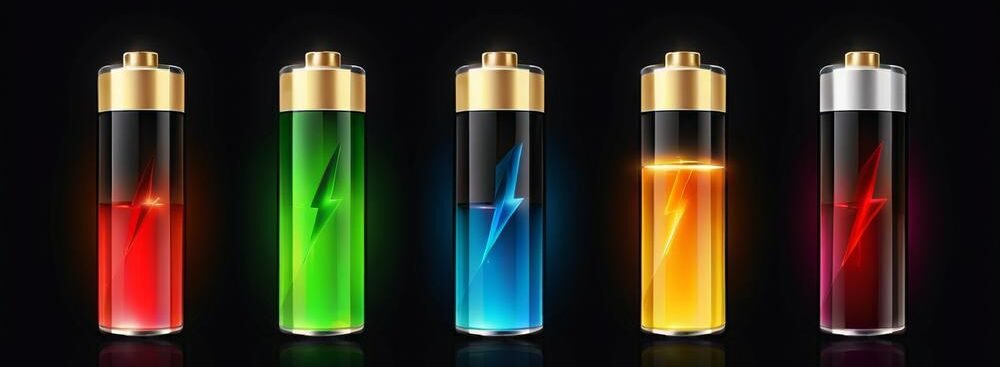
How to Assemble 48V 100AH Lithium Battery Pack
Description
The production of a 48V 100AH lithium battery pack requires strict compliance with safety specifications and to ensure the consistency and reliability of the battery pack,here are the detailed steps and precautions:
1. Battery configuration design
1.1 Cell selection
Type: Lithium iron phosphate battery (LiFePO₄) recommended. High safety and long life (approximately 6000 cycles).
Specifications:
Cell voltage: 3.2V (full 3.65V)
Unit capacity: 100Ah
Number of series: 15 strings (15×3.2V=48V)
Total batteries: 15 cells
2.2 Battery parameter calculation
Total capacity: 100Ah
Total energy: 48V×100Ah=4800Wh (4.8H electricity)
Discharge current: Select the protection board according to the demand (such as 100A continuous discharge).
2.Prepare materials and tools
2.1 Key materials
Battery unit: 15 3.2V/20Ah lithium iron phosphate batteries (same batch, same capacity).
Protection board (BMS) : 48V 100A intelligent protection board (supports active balancing).
Connection wire: nickel-plated steel strip (thickness ≥0.15mm, width ≥15mm) or copper bar.
Housing: Fireproof ABS battery box (size must accommodate battery pack and leave room for cooling).
Charger: 48V lithium iron phosphate charger (output current recommended 10-20A).
2.2 Tools
Spot welding machine (required), soldering iron, multimeter, insulation tape, heat gun, torque wrench, insulation gloves, goggles.
3.Assembly procedure
3.1 Cell screening and testing
Voltage consistency: Measure the voltage of each cell with an error of ≤±0.02V.
Capacity test: Use charge and discharge equipment to verify whether the monomer capacity is consistent (error ≤5%).
Appearance check: Ensure that there is no bulge, leakage, pole oxidation and other problems.
3.2 Battery series
Series: 15 monomers are connected end to end (positive and negative), and the nickel sheet is welded with a spot welding machine to form 48V 100AH Lithium Battery.
Note:
The nickel sheet should cover the pole completely to avoid virtual welding.
Keep the battery cool during welding to prevent overheating damage.
Separate each battery string with an insulating board to avoid short circuit.
3.3 Install Lithium Battery Management System (BMS)
Connection mode:
The sampling lines of the BMS are connected sequentially to the positive and negative poles of each battery string.
The main input/output line (thick line) connects the total positive and negative terminals of the battery pack.
Functional test:
Short-connect the charging port and check whether the BMS can identify the voltage normally.
Disconnect the load and verify that the overdischarge protection is triggered.
3.4 Shell assembly and insulation treatment
Secure the battery pack: Use silicone or cable ties to secure the battery pack in the housing to avoid shaking.
Heat dissipation design: open ventilation holes at the top and bottom of the housing, or install cooling fans.
Insulation protection: All exposed metal parts are wrapped with heat shrink tubes to ensure that there is no risk of short circuit.
3.5 Interface and identification
Charge/discharge interface: Use Anderson plug or high current connector.
Label: Label the battery parameters (48V 100Ah Lithium battery), positive and negative direction, and warning message on the shell.
4.Testing and debugging
4.1 Voltage detection
The total voltage should be about 48V (full about 54V).
Single series voltage difference ≤±0.05V, otherwise need to be adjusted by BMS balancing function.
4.2 Charge and discharge test
Charging: Charge to full charge (54V) with a special charger, check whether the charging current is normal.
Discharge: Discharge with a load resistor or inverter, record the discharge curve, and verify whether the capacity is up to standard.
4.3 Protection function verification
Overcharge protection: When charging to 54V, the BMS should cut off the charge (assuming the protection value is 54V).
Overdischarge protection: When the discharge reaches 42V(Cell 2.8V), the BMS should cut off the discharge (assuming the protection value is 42V).
Short-circuit protection: short-circuit the output with a wire, and the BMS should be powered off immediately.
5.Conclusion
Through the above steps, you can produce a safe and reliable 48V 100AH lithium battery pack. If you are not familiar with circuits or welding, it is recommended to seek professional help to ensure personal and property safety.
